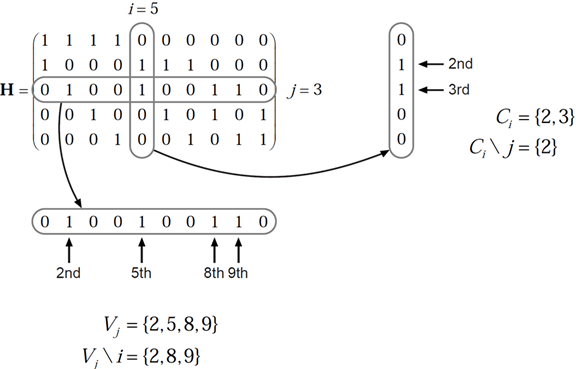nrLDPCDecode
Low-density parity-check (LDPC) decoding
Syntax
Description
[
returns the LDPC-decoded output matrix out,actNumIter,finalParityChecks] = nrLDPCDecode(in,bgn,maxNumIter)out for the input data matrix
in, base graph number bgn, and maximum number of
decoding iterations maxNumIter. The function also returns the actual
number of iterations actNumIter and the final parity checks per
codeword finalParityChecks.
The decoder uses the sum-product message-passing algorithm. The data bits must be LDPC-encoded as defined in TS 38.212 Section 5.3.2 [1].
[
specifies optional name-value pair arguments, in addition to the input arguments in the
previous syntax.out,actNumIter,finalParityChecks] = nrLDPCDecode(___,Name,Value)
Examples
Input Arguments
Name-Value Arguments
Output Arguments
Algorithms
References
[1] 3GPP TS 38.212. “NR; Multiplexing and channel coding.” 3rd Generation Partnership Project; Technical Specification Group Radio Access Network.
[2] Gallager, Robert G. Low-Density Parity-Check Codes, Cambridge, MA, MIT Press, 1963.
[3] Hocevar, D.E. "A reduced complexity decoder architecture via layered decoding of LDPC codes." In IEEE Workshop on Signal Processing Systems, 2004. SIPS 2004. doi: 10.1109/SIPS.2004.1363033
[4] Chen, Jinghu, R.M. Tanner, C. Jones, and Yan Li. "Improved min-sum decoding algorithms for irregular LDPC codes." In Proceedings. International Symposium on Information Theory, 2005. ISIT 2005. doi: 10.1109/ISIT.2005.1523374
